You can contact LEARNZ, part of CORE Education, at:
Postal Address:
PO Box 13 678,
Christchurch 8141,
New Zealand
90% of the world's ice is in Antarctica.
Antarctica contains more than 90% of the world’s ice. The ice comes in different forms:
Antarctica is a continent. It is covered by a layer of ice. This ice was formed over thousands of years from snow. This snow has been squashed down as new snow has fallen on top.
The Antarctic ice sheet is:
An ice shelf is formed when the ice sheet flows downhill into the sea. The ice shelf is made of fresh water.
The Ross Ice Shelf is one of the largest in the world. It covers an area nearly twice the size of New Zealand. The Ross Ice Shelf varies in thickness from over 1000m to less than 100m.
Sea ice is formed on the surface of the ocean. The temperature of the water has to fall below –2 degrees C.
Sea ice has about 1% salt. The actual sea water has 3.5% salt. Ice is less dense (heavy) than water so it floats on the surface. The sea ice forms a layer several metres thick.
Each winter sea ice forms, although some parts do not melt the following summer.
Sea ice is not the same as icebergs. Icebergs break off the edges of ice shelves and so are made of fresh water.
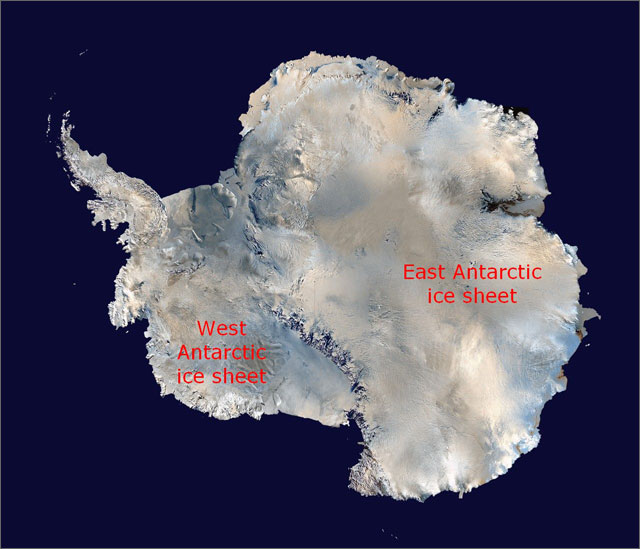
,The ice sheet that covers almost all of Antarctica is made up of two ice sheets that merge into one. The East Antarctic ice sheet is the larger of the two. Image: NASA (edited).
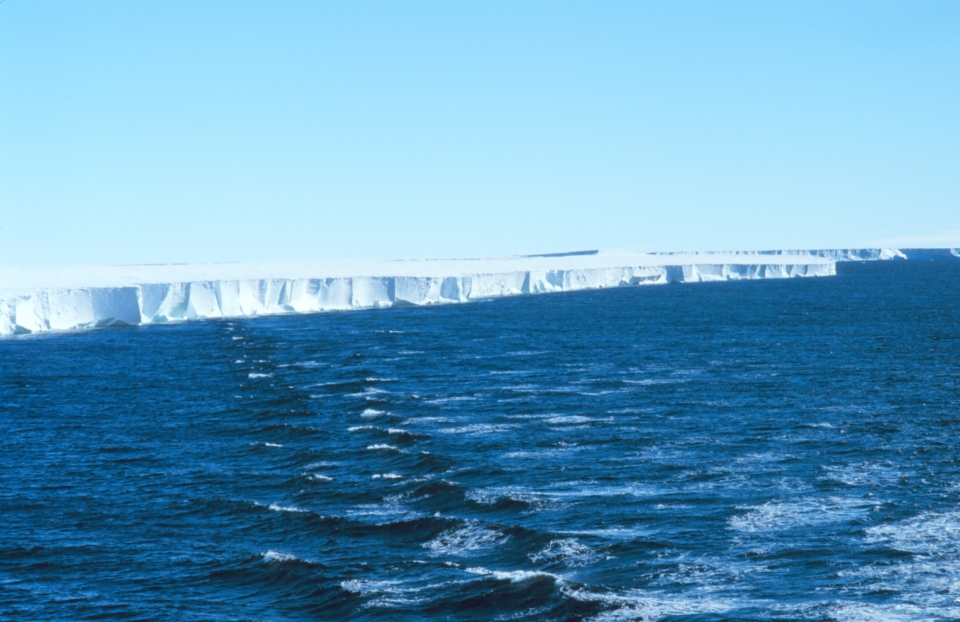
,The Ross Ice Shelf is one of the largest in the world. It is a floating extension of the West Antarctic Ice Sheet and is 100m thick at its leading edge. Image: Public Domain.
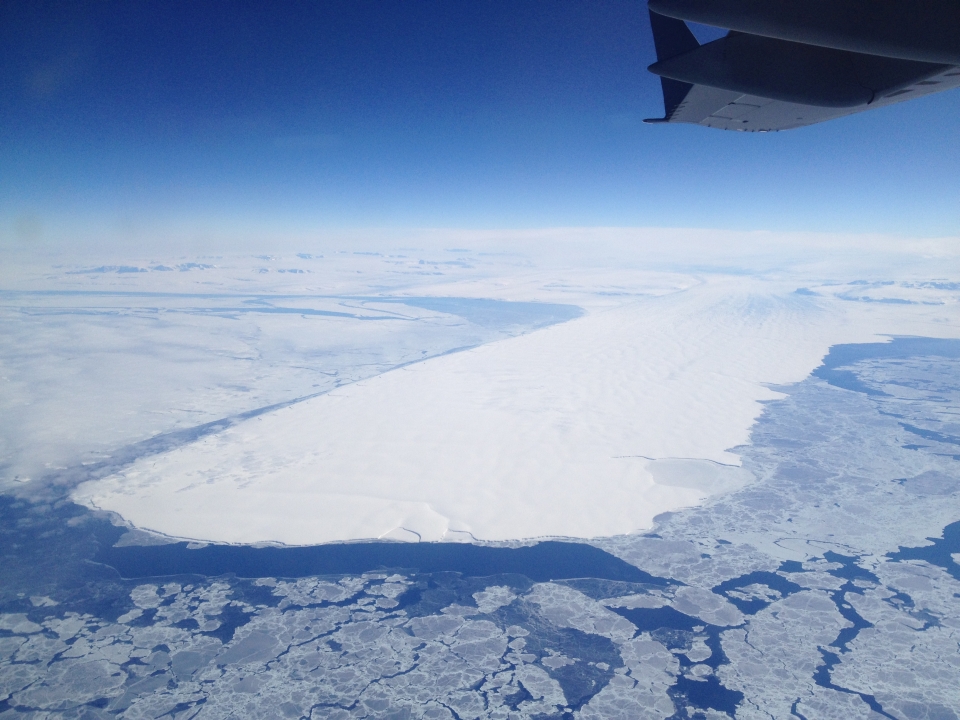
,An ice shelf is formed when the ice sheet flows downhill into the sea. The ice shelf is made of fresh water. Image: LEARNZ.
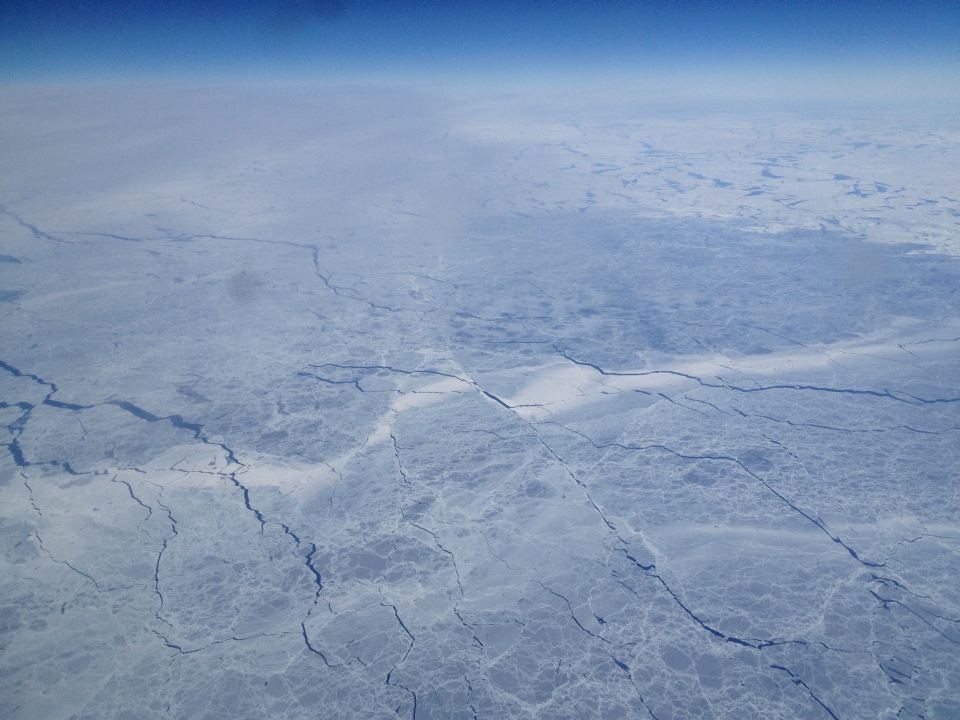
,Antarctic sea ice visible from the C17 Globemaster aircraft on route to Antarctica. At what temperature does sea water usually freeze? Image: LEARNZ.
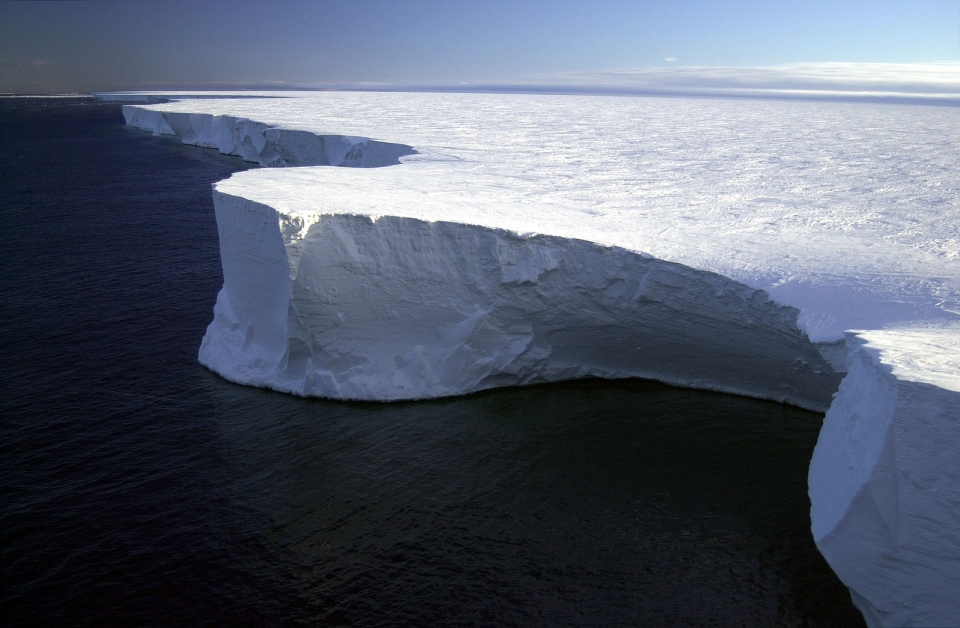
The northern edge of the giant iceberg, B-15A, in the Ross Sea, Antarctica. Iceberg B-15A is a fragment of a much larger iceberg (B-15) that broke away from the Ross Ice Shelf in March 2000. Image: Public Domain.
At the South Pole you would be standing on top of over 3km of ice, at the North Pole on top of just 5m of ice. How do you think this ice affects the climate and weather?